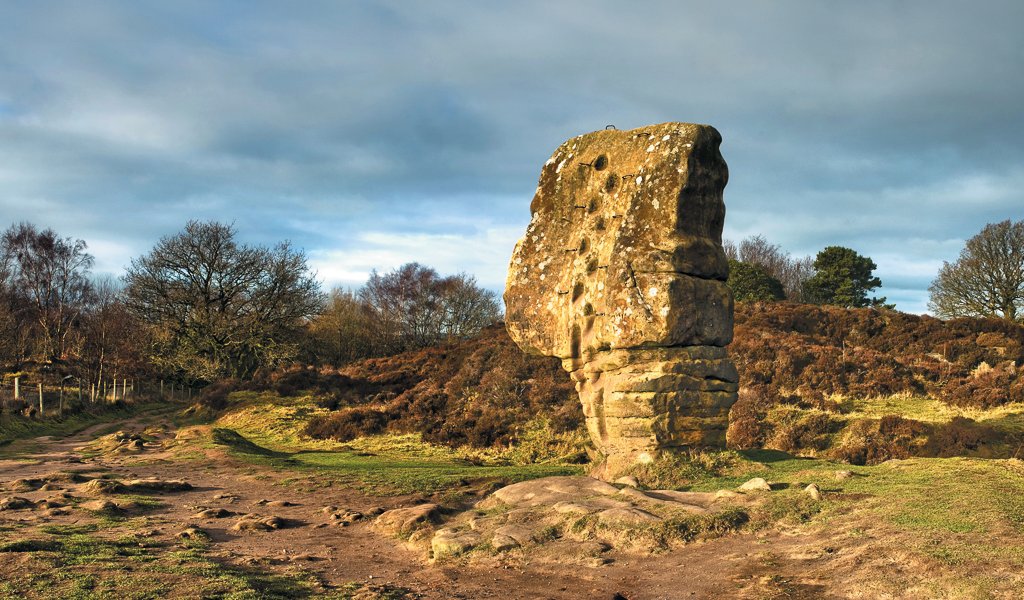Chris Drabble ventures out onto Stanton Moor to discover that its history, its curiously-shaped stone monoliths, mysterious stone circles and burial cairns along with its spectacular scenery, epitomises the very essence of the Peak District National Park. “I absolutely recommend a short walk over Stanton Moor should be taken at a gentle stroll so as to truly appreciate and savoured its delightful landscape.”

Chris Drabble
FOR a visit to Stanton Moor, the entrance at the crest of Birchover Road is probably the most logical place to start. A large sandstone block narrows the entrance and then a wooden gate followed by an information board confirms that you’re on the right track and from here, the path climbs steadily and then out onto open moorland.
The first encounter is the fabulously isolated and very aptly-named Cork Stone. A series of steps and alternating iron hoops have been worked into its face and it appears to make the prospect of climbing to the top a deceptively easy proposition, but although I have stood upright on top of the Cork Stone myself, I don’t actually recommend this activity. In my opinion, ‘climbing up is one thing, but getting down again is entirely another’.
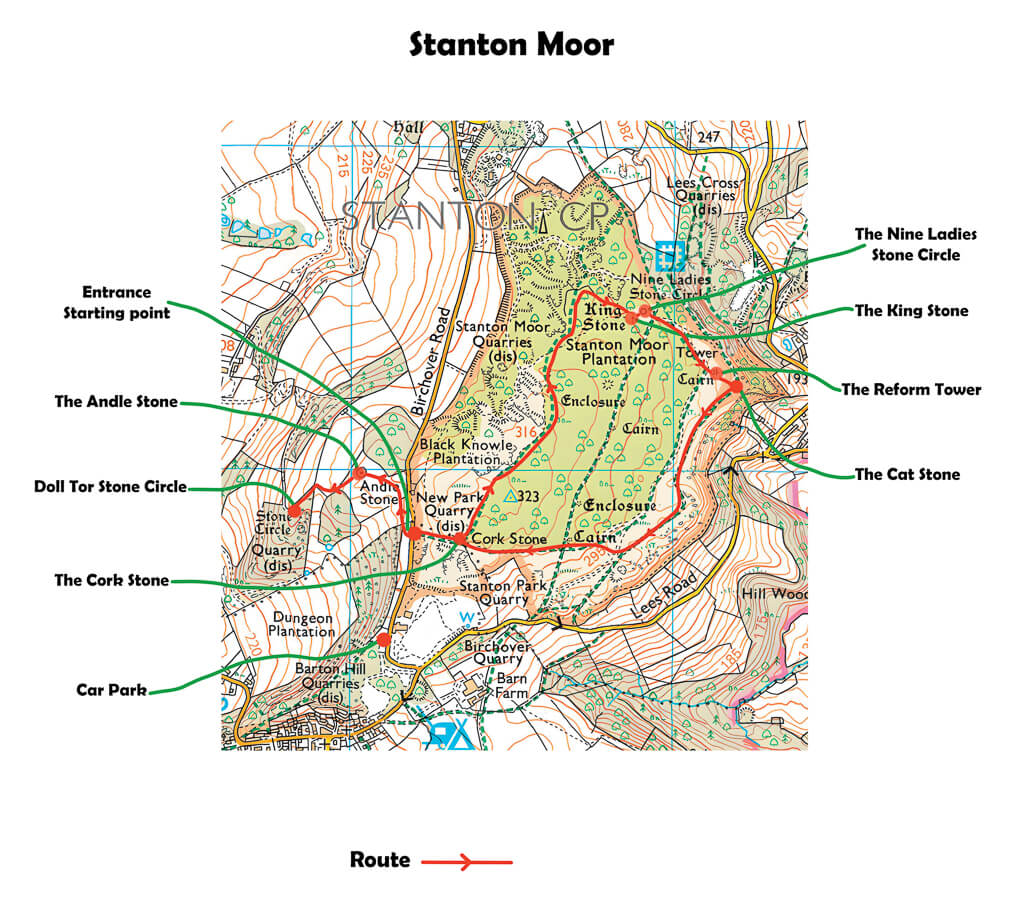
1. The Cork Stone
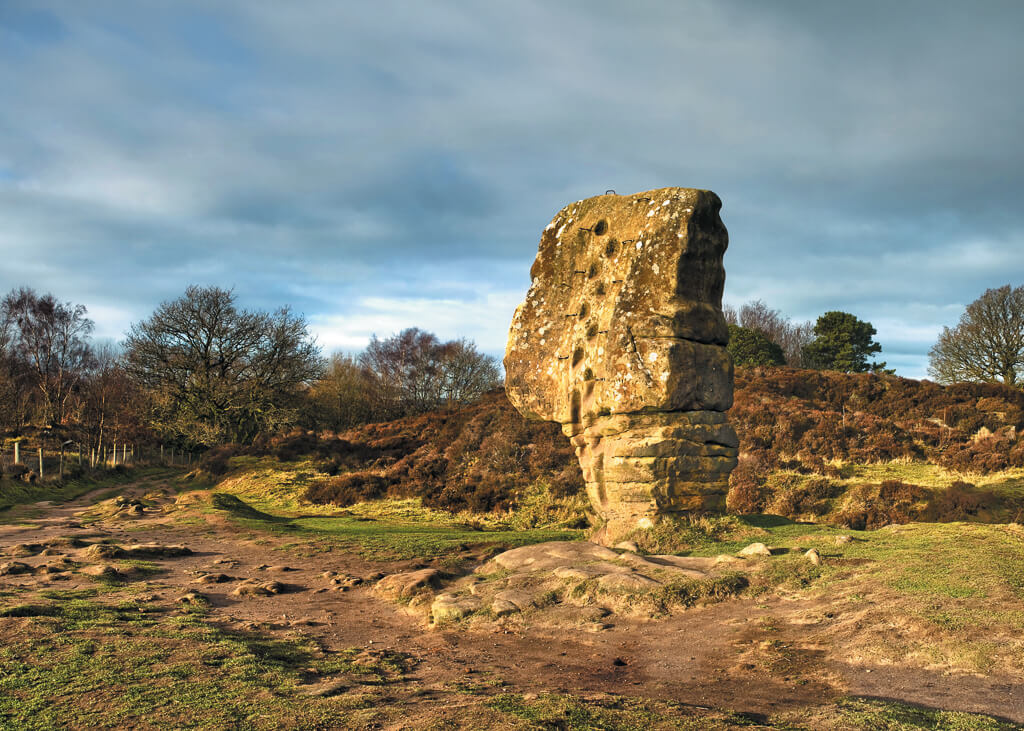
In physical terms, Stanton Moor is a mile square; an upland, gritstone (Ashover Grit) plateau that rises to a height of approximately 930 feet.
Over time, its open heather moor and birch woodland topography has gently camouflaged many of Stanton Moor’s historical and industrial features leading to an environment that is serenely beautiful but also provides significant exploration for those with a fascination for human history.
Proceeding from the Cork Stone, a path to the left heads north over moorland and onwards towards the treeline in the distance, which contains the hidden Nine Ladies Stone Circle.
Along this higher ground, a wonderful panorama of views can be enjoyed in virtually every direction.
2. A windswept tree on Stanton Moor
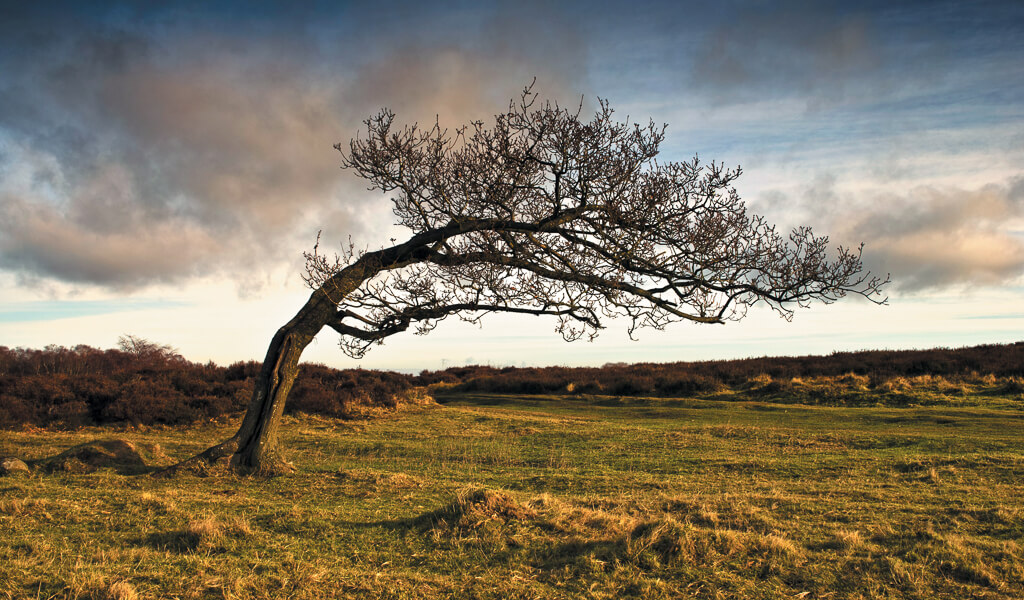
Stanton Moor conceals its curiosities until the last minute and so creates a sense of anticipation upon their discovery.
The Nine Ladies stand in a clearing at the northern end of Stanton Moor and are probably its most celebrated attraction and are hidden until the last minute. The King Stone or Fiddler’s Stone stands close by and to the west of the main circle of stones.
3. The Nine Ladies Stone Circle
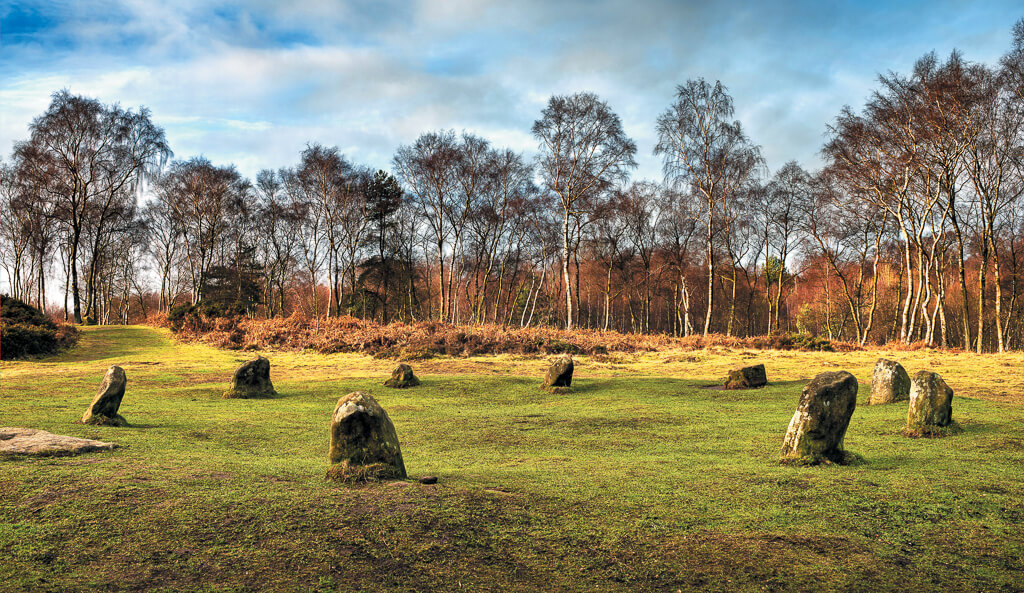
Early archaeologists discovered that in addition to the more prominent Doll Tor and the Nine Ladies, three other possible stone circles or ring cairns exist, in addition to four round barrows and over seventy burial cairns.
From this wooded northern end the views are now veiled or alluded to in glimpses of distant hills through the trees.
Continuing onwards from the Nine Ladies in an easterly direction, the Earl Grey Tower which was built to commemorate the Reform Bill in 1832 can be found on the northern edge of the moor and further on again the Cat Stone is waiting to be discovered, hidden amongst the trees.
4. The Earl Grey Tower
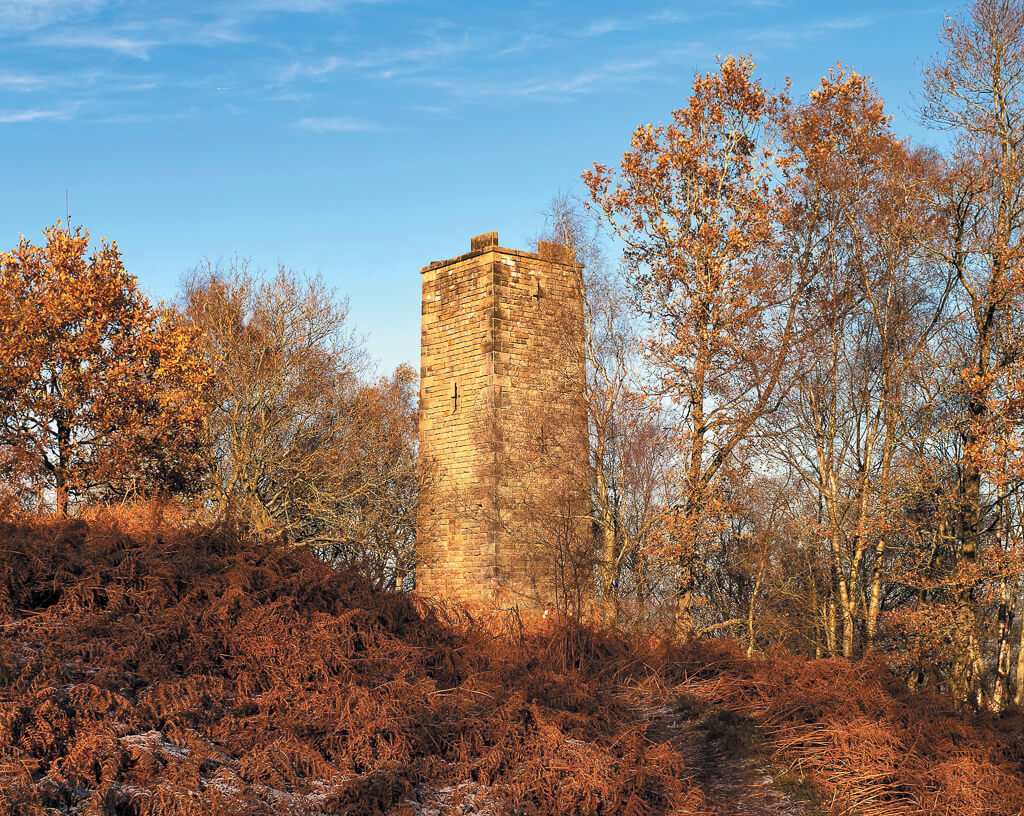
From here, a path at a lower elevation heads south and eventually returns to the Cork Stone and the starting point of the walk.
Two satellite features that are definitely worth exploring are the ‘Andle Stone’ – also known as the Twopenny Loaf – and the secretive Doll Tor. Both can be accessed through a concessionary gate on the opposite side of Birchover road.
5. Doll Tor
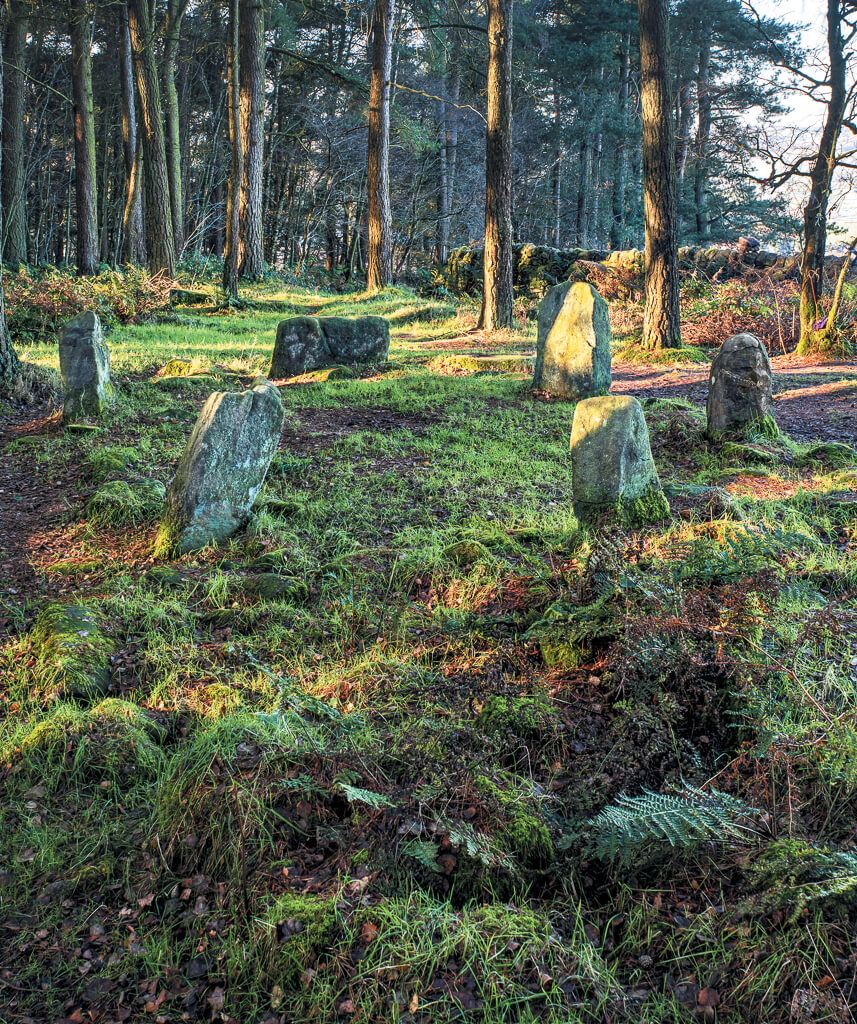
Stanton moor is designated as a Scheduled Ancient Monument which protects the Bronze Age burial, ceremonial and human settlement remains.
Editor’s Note: Parking alongside the moor at the crest of Birchover Road is permissible, as there are no road markings to prevent you from parking there. There are roadside spaces here, but always try to tuck your car in as close to the verge as possible. The road sometimes gets closed to parking. If there are no roadside spaces, there is a car park approximately 300 yards further down the road, opposite Birchover Stone Quarry.
Check out more of Chris Drabble’s images at Photo4me.com.

